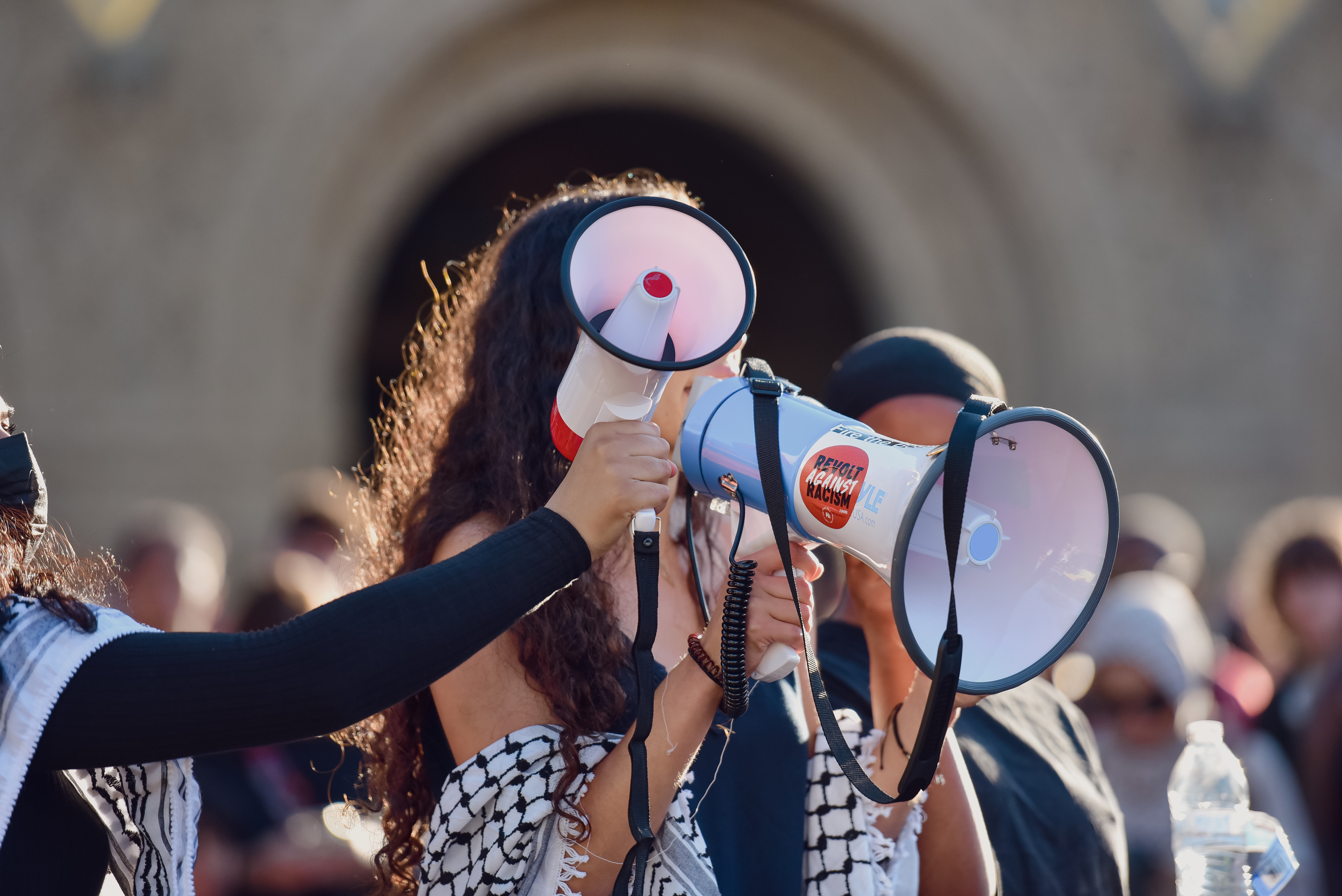Some students have expressed concern that campus activism and free speech is experiencing a chilling effect following the University’s updated free speech guidelines that were announced early this school year.
The University announced a series of free speech guidelines in September that detail the parameters of what’s allowed in campus demonstrations, following a tumultuous year of protests and counter-protests over the Israel-Gaza war.
Several faculty members have expressed their support for the guideline, calling it a proactive measure. Introduced in September by Provost Jenny Martinez and Vice Provost for Student Affairs Michele Rasmussen, the new guidelines outlined several points include advance registration of major events, designated outdoor spaces for gatherings, identification and masking guidelines and an emphasis on the policy’s viewpoint neutrality.
“The rules don’t exist to protect students,” said Yungsu Kim ’25, a member of Stanford Asian American Action Committee (SAAAC). “The rules exist to protect Stanford because Stanford is deeply, deeply afraid of what students were able to do last year.”
Kim also expressed concern that the statement’s guidelines “weren’t really made with student input.”
Only two major demonstrations have been held since the quarter started on Sept. 23.
During the last academic school year, community members — including students and faculty — hosted various walkouts in response to the Israel-Gaza war. Students held a 120-day encampment on White Plaza and occupied the president’s office in June — which resulted in the arrest of 13 Stanford students, including a Daily reporter. These protests have called for the University to divest from companies tied to the Israel Defense Forces (IDF), a proposition which the University rejected earlier this month, among other demands.
In conjunction with the guidelines, the University released a “Statement on Freedom of Expression,” which was approved by the Faculty Senate.
The senate’s Ad Hoc Committee had been considering issues relating to speech since Spring 2023, according to Bernadette Meyler J.D. ’03, special advisor to Martinez.
The senate “heard a desire for a clear affirmation of the importance of freedom of expression on campus from many individuals and groups,” Meyler wrote to The Daily.
She also wrote that the new Freedom of Expression website “was designed to clarify and simplify existing policy where possible, render any constraints on speech obvious and straightforward, and expand the number of appropriate venues for large gatherings.”
Zoe Tweedie ’25, the ASSU Director of Free Expression, said the statement has “both positive and negative impacts.”
Tweedie noted that in the past, White Plaza was called a “free speech zone,” which “incorrectly indicated” free speech could only be expressed in that area. She was “very happy” to see such language removed, as it represents a “productive change” for the University’s policy.
However, Tweedie acknowledged that “when you put extra hurdles up, or you put extra requirements to express free speech, it can always end up chilling speech.”
While community reactions to the statement continue to unfold, Kim said student protests in support of community spaces, such as the Asian American Activity Center, El Centro and ethnic theme houses, are vital to “create a more equitable campus.”
“It’s our task and our obligation to push the University,” Kim said. “We cannot just stand here waiting for the rules to bend or change or for Stanford to be more lenient. We actively need to fight.”
University President Jonathan Levin ’94 shared in a Friday interview with The Daily that the new policy has the potential to be clarified in a few places, including around chalking.
“The rules were designed with an intent to protect speech, and so hopefully they will do a good job of that over time,” Levin said. “They need to stand the test of time.”
Russell Berman, Walter A. Haas Professor in the Humanities, told The Daily that he considered the statement to be “in part reactive and in part wisely proactive,” in order to ensure that community members don’t have their day-to-day, necessary movement disrupted.
He referenced the protests at Columbia and UCLA, which drew police responses and ended in the canceling of the former’s commencement.
“The University is acting proactively in order to guarantee that all members of the community aren’t prohibited and aren’t prevented in their legitimate movement on campus,” he said.
Per the updated policy, events with an expected attendance of over 100 people require advance registration and approval in designated “outdoor event spaces,” besides White Plaza, where registration is still “strongly encouraged.”
Kim also argued that “it’s not just folks who are engaged in political activism who are affected by these policies,” since all Volunteer Student Organizations (VSOs) “now have to jump through these bureaucratic loopholes.”
“All Stanford is doing is making it exceptionally harder for people, for people to do what they’ve been doing, which is to create community in the absence of Stanford administration,” Kim said.
George Porteous contributed reporting.
